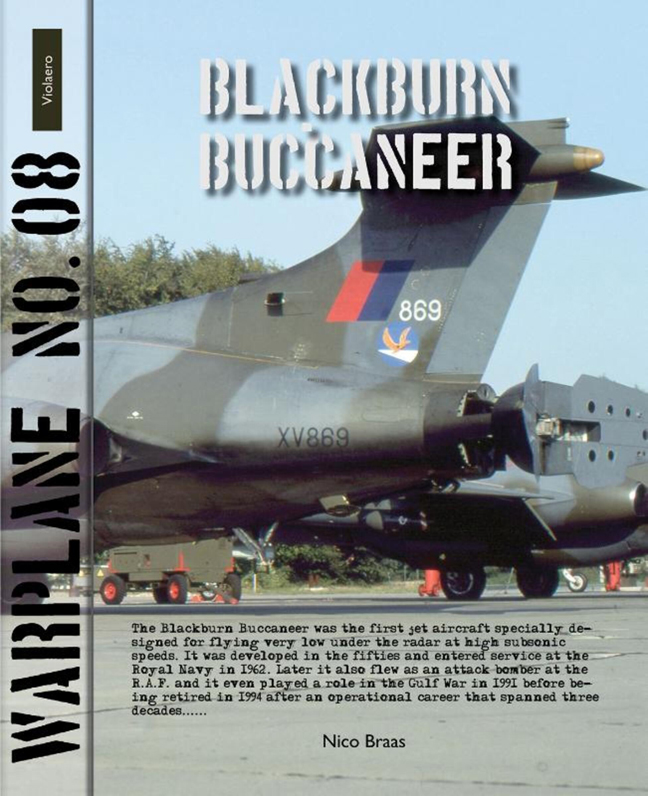Book contents
- Frontmatter
- Introduction
- In service at the royal navy
- Buccaneer Photo-Recce crate
- South African nuclear bombers
- In service at the R.A.F. … at last
- Martel Missile (AJ.168) (AS.37)
- WE177 nuclear bomb
- The Buccaneer goes to war
- Museum piece
- Final phase out and retirement
- Sub-versions S.2:
- Accidents and Incidents
- Survivors
- Technical Description
- References
- Credits
South African nuclear bombers
Published online by Cambridge University Press: 20 February 2024
- Frontmatter
- Introduction
- In service at the royal navy
- Buccaneer Photo-Recce crate
- South African nuclear bombers
- In service at the R.A.F. … at last
- Martel Missile (AJ.168) (AS.37)
- WE177 nuclear bomb
- The Buccaneer goes to war
- Museum piece
- Final phase out and retirement
- Sub-versions S.2:
- Accidents and Incidents
- Survivors
- Technical Description
- References
- Credits
Summary
South Africa was one of the countries having its own nuclear bombs as a deterrent force. In fact it was the only African country having this capability. The ‘weapons grade’ HEU (Highly Enriched Uranium)235 was manufactured during a secret nuclear programme and it total this yielded enough material to produce a number of nuclear bombs. It was an open secret that Israel has actively supported this program. The South African Air Force had two military aircraft suitable for the launch of their nuclear weapons: the English Electric Canberra and the Blackburn S.50 Buccaneer.
Already in 1948 an Atomic Energy Board was established with as final result a nuclear research laboratory near Pretoria in the early sixties. The research also included uranium enrichment. When the international political situation in Africa was such that, just like Israel, the very existence of the ‘white’ South African republic became under pressure the enrichment of weapons grade uranium was started. It was the intention to build up a typical ‘Cold War’ style deterrent force to give a very clear message to neighbouring countries not to start any military adventures against South Africa. Although preparations were made for a nuclear test explosion in the Kalahari desert in the summer of 1977 this never took place under heavy international pressure.
In spite of this there was enough U235 material enriched to produce a number of nuclear bombs. These would have been delivered by specially modified versions of the English Electric Canberra and the Blackburn S.50 Buccaneer. However, also nuclear ballistic missiles were at that stage under active development. The South African nuclear bombs were estimated to have a yield of 10 to 18 KT. The bomb had, when fully assembled, a length of 1.8 m and a diameter of 63.5 cm with a weight of 900-1000 kg.
South Africa ended its nuclear weapons programme in 1989. All the bombs (six constructed and one under construction) were dismantled and South Africa acceded to the Treaty on the Non-Proliferation of Nuclear Weapons when South African Ambassador to the United States Harry Schwarz signed the treaty in 1991. On 19 August 1994, after completing its inspection, the International Atomic Energy Agency (IAEA) confirmed that one partially completed and six fully completed nuclear weapons had been dismantled.
- Type
- Chapter
- Information
- Blackburn Buccaneer , pp. 22Publisher: Amsterdam University PressPrint publication year: 2014

